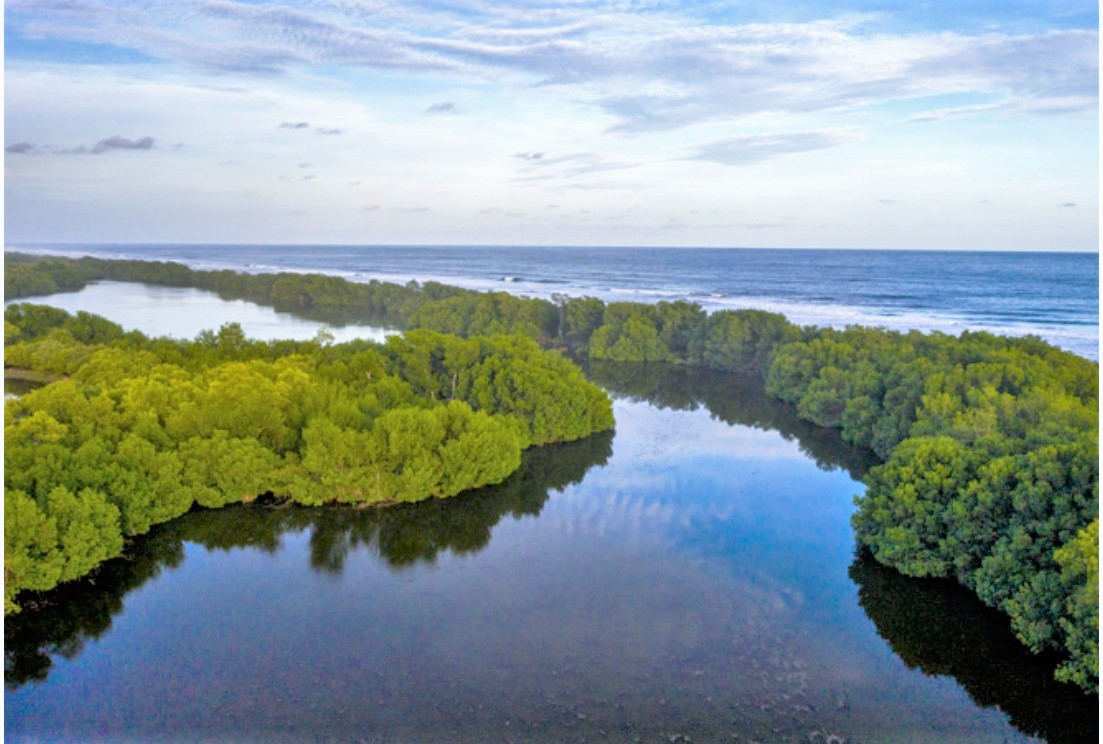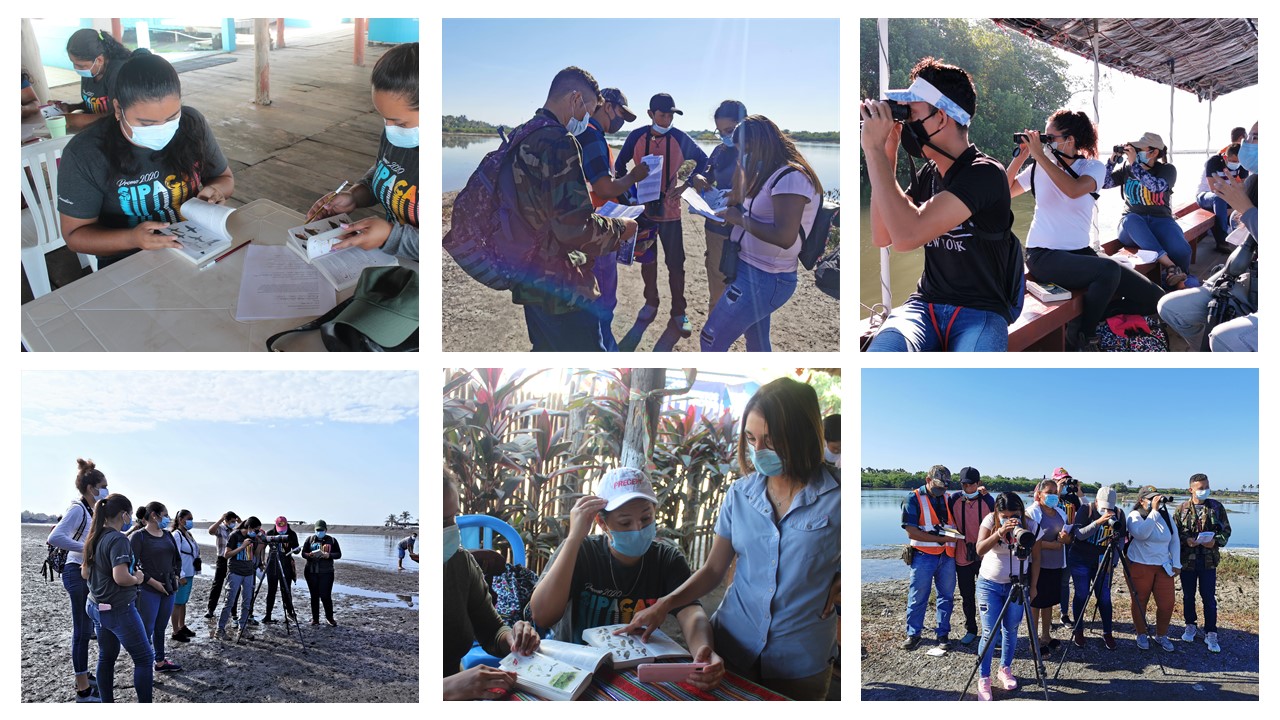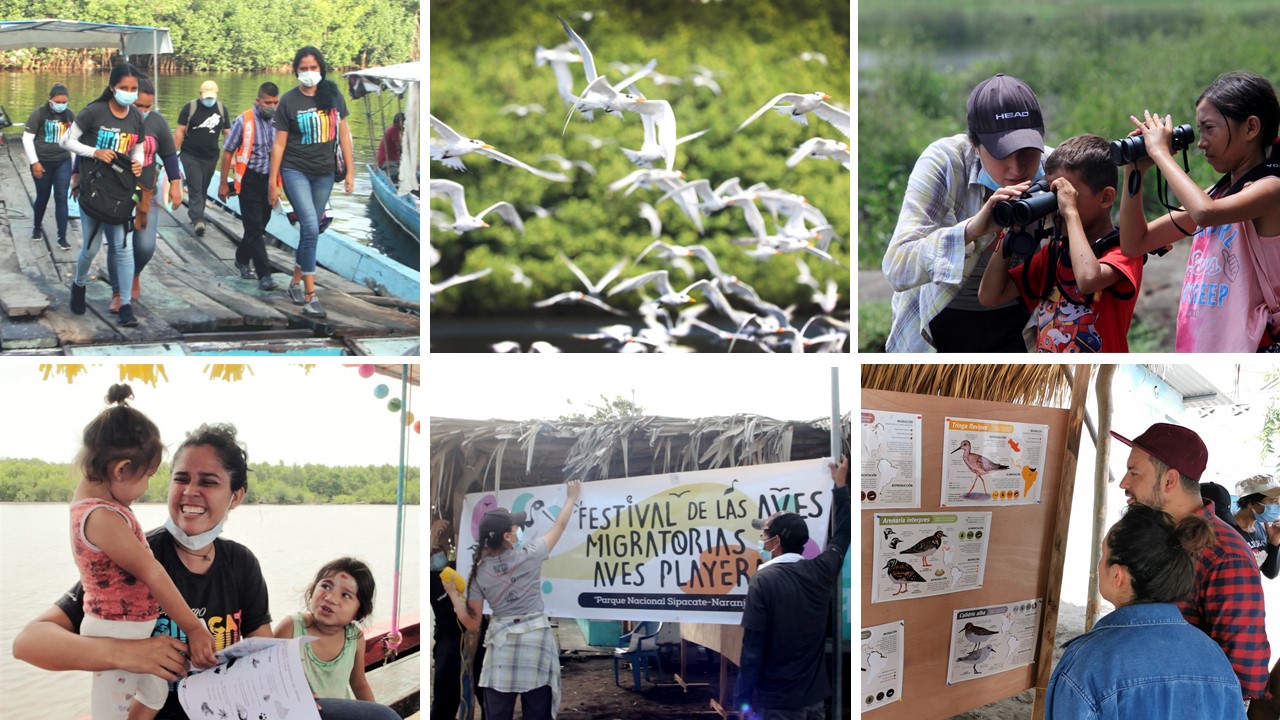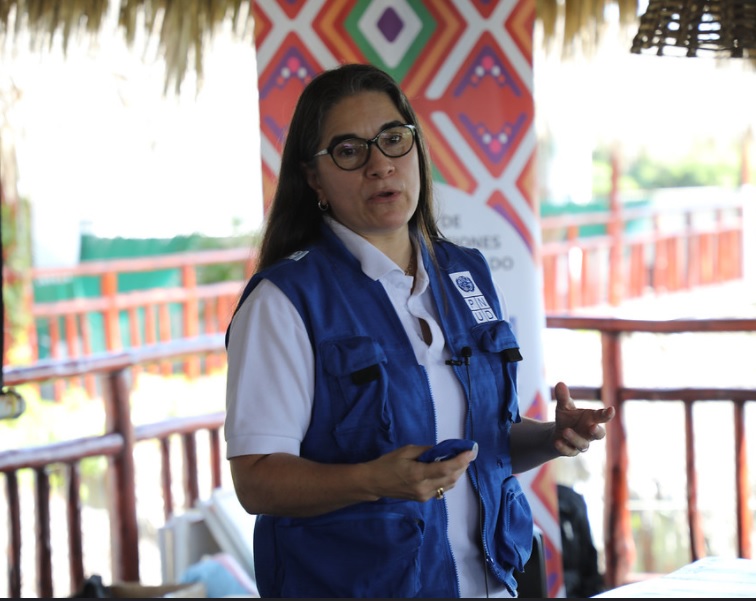In 2020, the SGP commenced an ICCA-GSI ecotourism project to train youth from indigenous and local communities living along the Sipacate-Naranjo National Park, the only protected marine-coastal national park in Guatemala. The Sipacate municipality is located in Guatemala’s Pacific coast, where diverse aquatic ecosystems provide fundamental habitats for biodiversity and primary livelihood sources for rural communities, such as fishing and tourism. The objective of the project has been to (i) empower youth to become future engines in biodiversity and ecosystem conservation (e.g., coastal wetlands and mangroves); and (ii) provide sustainable and environmentally-friendly income generating options.

As the COVID-19 pandemic ravaged the country’s economy and soared unemployment rates, many Sipacate community members found hope in the project. Silvia Alvarado, a native of Sipacate, lived and worked in Guatemala City. With the pandemic, she lost her job and a good economic income that allowed her to pursue her studies at a university. She had to leave behind a life that she had already adapted to in the city and return to her birthplace. "I was afraid of getting infected. It made me very sad because I had to unsubscribe [from the university] and leave my friends and family," she says.
While the pandemic led people around the world to seek more activities in natural and outdoor areas, the economic ramifications of COVID-19 have been particularly noticeable in Sipacate because people were not aware of their territories, despite having the only protected marine-coastal national park in the country.

In partnership with scientists from several NGOs, such as the Wildlife Conservation Society (WCS), the Council of Community Development, and the National Council for Protected Areas, an environmental education program was implemented by the Sipacate communities, with women accounting for 69 percent of participants.
The joint efforts of scientists and local communities allowed to break down barriers that separate science and traditional knowledge, and to reduce information gaps in conservation plans by collecting data together that would otherwise be impossible to obtain. While the pandemic protocols restricted workshops and fieldwork on monitoring activities of migratory birds from being carried out, the group persevered and conducted virtual training sessions from December 2020 to February 2021. According to Bianca Bosarreyes, a biologist at WCS, “there were 180 hours in total in the community guide course. Of the 36 participants, 25 were women. Of these, 15 received an additional 60 hours, 20 of theory and 40 dedicated to weekly field trips, to learn how to monitor birds.” To date, there are very few people in Guatemala with the capacity to monitor these animals and that is where the knowledge acquired by these women plays a very important role.

For the first time, a bird guide identifying more than 150 species in the Pacific Coast of Guatemala is available in Spanish. As festivals such as the Migratory Bird Festival of the Sipacate-Naranjo National Park are slowly re-opened, Yamilet Pirir, Alvarado and other women have been distributing educational materials that have triggered visitors to ask for information about the Sipacate municipality. "They also ask for guided tours to find out what inhabits the canal", according to Pirir. Additionally, Alvarado says that “after the festival, the people of the municipality have asked us how the area, turtles, and birds can be protected.”
To further improve their skill sets in ecotourism, the women are currently learning digital marketing techniques to promote their services at local, national, and international platforms. To date, the project has supported over 20,000 Sipacate community members through tourism opportunities, thereby, providing alternative means of living and increasing income in the area. As the country opens up to tourism, the Sipacate tourist guides are expected to earn 100 quetzales (US$ 12.90) for each tour with 10 guests.

Contrary to their devastating experiences at the beginning of the pandemic, the Sipacate women now have a vision of the future they want to build. "It is no longer about offering only the beach and the sea, but we want to publicize the local gastronomy, show the canal... we want everyone to know Sipacate and its importance for natural life," concludes Pirir.

According to Ana María Díaz, UNDP Resident Representative in Guatemala, "this project demonstrates that geographical areas with high conservation value can be engines of social and economic development, while sustainably using environmental services such as tourism, leaving no one behind."
This ICCA-GSI project reinforces the progress of the 2030 Agenda for Sustainable Development, contributing to Sustainable Development Goals 1: End Poverty; 13: Climate Action; 14: Underwater Life; and 15: Life of Terrestrial Ecosystems.
Press releases with more information on this initiative can also be found here, here, and here.
This project is one of the 14 ICCA-GSI projects in Guatemala. For more information about them, please contact the SGP National Coordinator, Caroll Dardon at caroll.dardon@undp.org.
For information about the ICCA-GSI at the global level, please contact Terence Hay-Edie at Terence.hay-edie@undp.org and Anna Lisa Jose at annalisa.jose@undp.org




